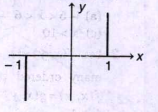Which one of the following is not true about the Mughal Mansabdari System?
A
There were thirty-three (33) divisions of mansabdars.
B
They (mansabdars) could be assigned ‘Mashrut’ or conditional rank.
C
It put the Mughal transport system on a sound footing.
D
The Mansabdars were hereditary officers.
Text Solution
The correct Answer is:D
In the Mughal Mansabdari system, the Mansabdars were hereditary officers.Mansabdari system was the generic term for the military-type grading of all imperial officials of the Mughal Empire Nama. Ishwar Das Nagar composed Futuhat-i- Alamgiri. Tahiya bin Ahmad composed Tarikh- i-Mubarakshahi. Abbas Khan sarwani composed Tarikh-i-Shershahi Gulbadan Begum was daughter of Mughal Emperor Babur, she is the author of Humayun Nama, the account of the life of her half- brother, Humayun. Ishwar Das Nagar composed Futuhat-i-Alamgiri which is history of Aurangzeb’s reign. 2. (b) The Mughal rulers did not accept the overlordship of the Calipha. In 1580, a rebellion broke out in the eastern part of Akbar.s empire, and a number of fatwas, declaring Akbar to be a heretic, were issued by Qazis. Akbar suppressed the rebellion and handed out severe punishments to the Qazis. In order to further strengthen his position Akbar issued a mahzar or declaration that was signed by all major ulemas in 1579. The mahzar asserted that Akbar was the Khalifa of the age, the rank of the Khalifa was higher than that of a Mujtahid, in case of a difference of opinion among the Mujtahids, Akbar could select any one opinion and could also issue decrees which did not go against the masses. It is believed that the Mahzar helped in stabilizing the religious situation in the empire. It made Akbar very powerful due to the complete supremacy accorded to the Khalifa by Islam, and also helped him eliminate the religious and political influence of the Ottoman Calipha over his subjects. 3. (d) In the Mughal Mansabdari system, the Mansabdars were hereditary officers.Mansabdari system was the generic term for the military-type grading of all imperial officials of the Mughal Empire. The mansabdars governed the empire and commanded their armies in the emperor.s name. Though they were usually aristocrats, they did not form a feudal aristocracy, for neither the offices nor the estates that supported them were hereditary. There were 33 categories of mansabdars. The term is derived from Mansab, meaning .rank.. Hence, Mansabdar literally means rank-holder. The Mansabdars were differentiated by the Zat and the Sawar Rank. The Zat referred to rank maintained by the mansabdar and the Sawar referred to the number of horseman maintained by the mansabdar.
|
Similar Questions
Knowledge Check
Which one of the following is not ture about the Mughal Mansabdari Syatem?
AThere were 33 divisions.BThey got conditional or Mashut rankCTheir ‘Sawar’ rank could exceed the ‘Zat’ rank.DAli civil and military officer were given mansabs.Which one of the following is not true about lichens?
ATheir body is composed of both algal and fungal cellsBSome form food for reindeers in Arctic regionsCSome species can be used as pollution indicatorsDThese grow very fast at the rate of about 2 cm per yearWhich one of the following is not true about vitamins?
AVitamins are organic catalystsBVitamins are indispensible for lifeCVitamins act as source of energyDTocopherol is anti-sterility vitamin

Which one of the following is true about this reaction ?
View Solution
Which one of the following is true about this reaction ?
View SolutionWhich one of the following is not true about Problem Solving
View SolutionWhich one of the following is not true about Problem Solving
View SolutionWhich one of the following is not true about antibiotics
View Solution

